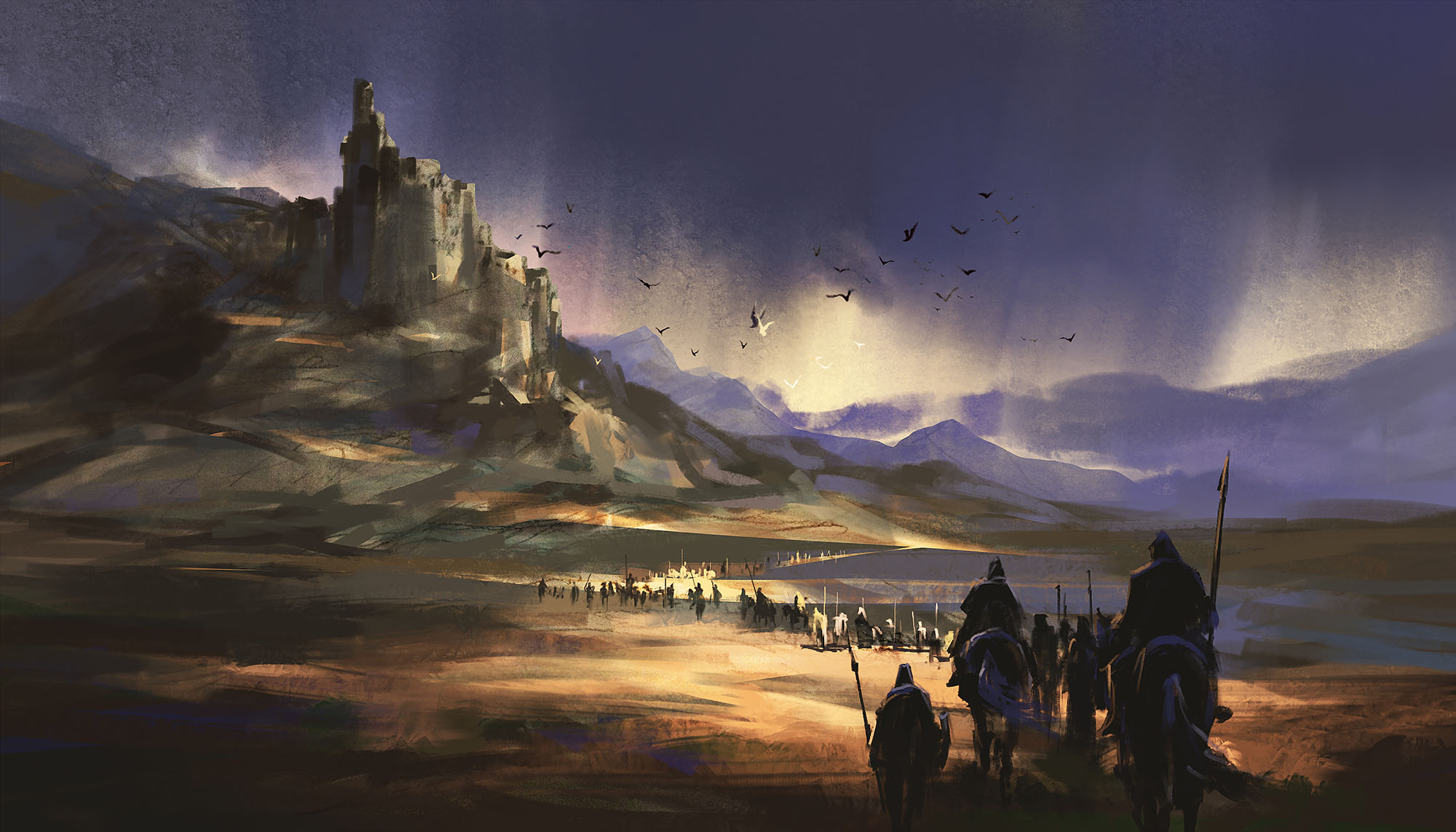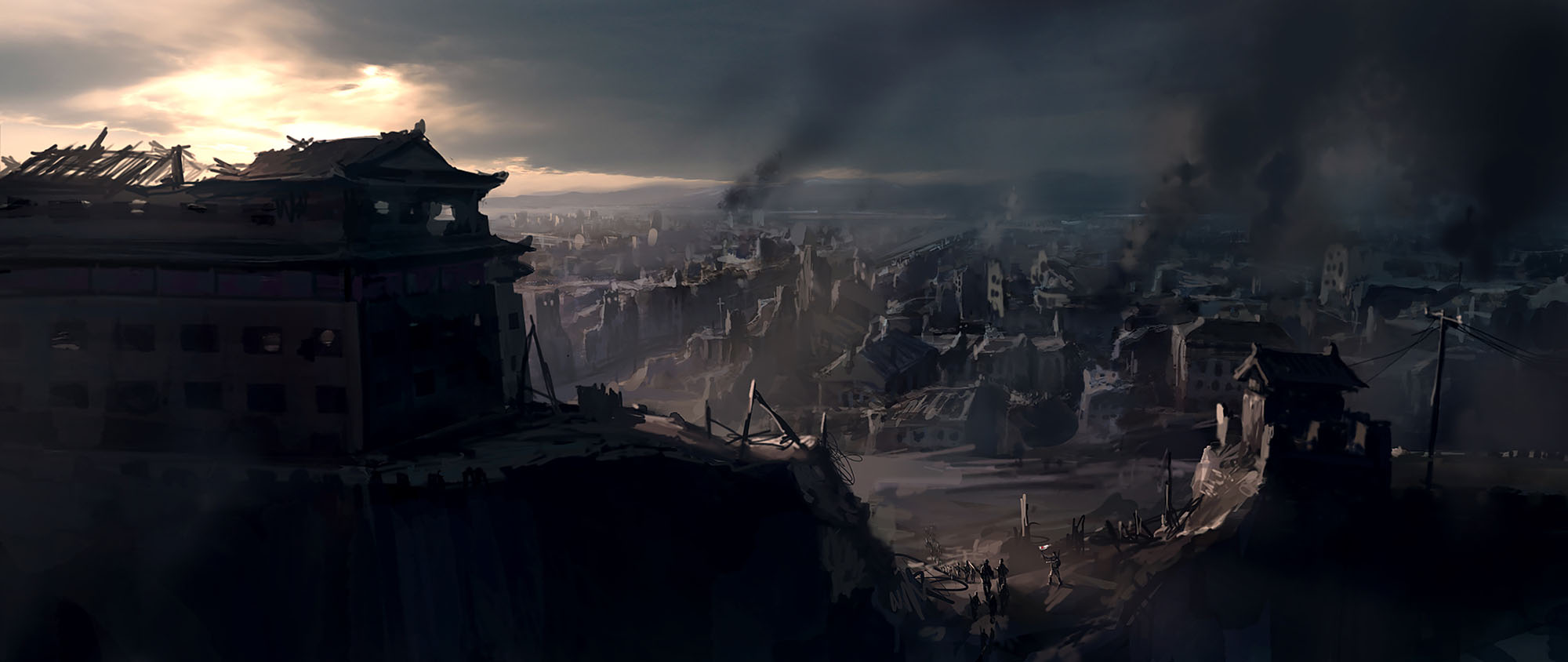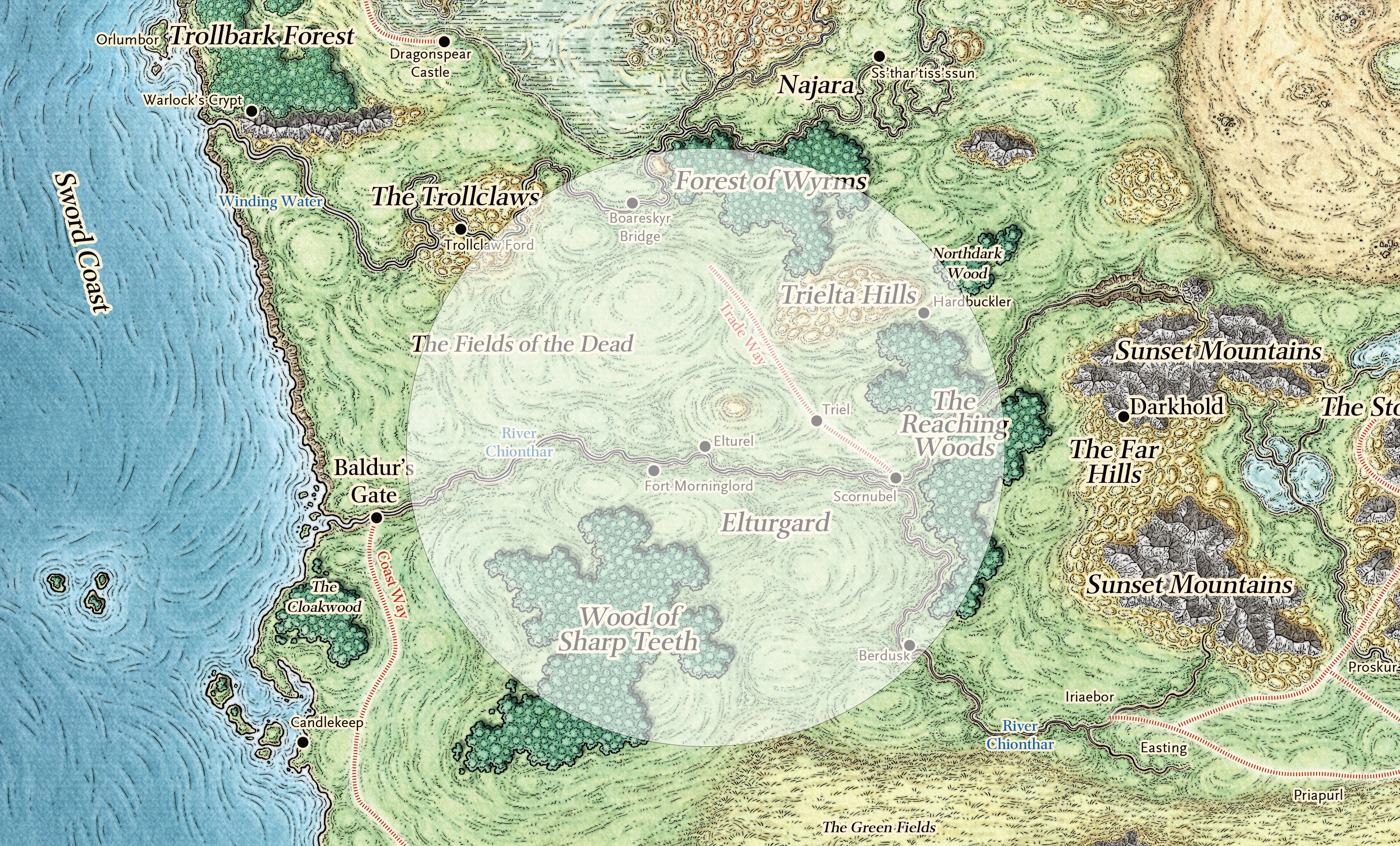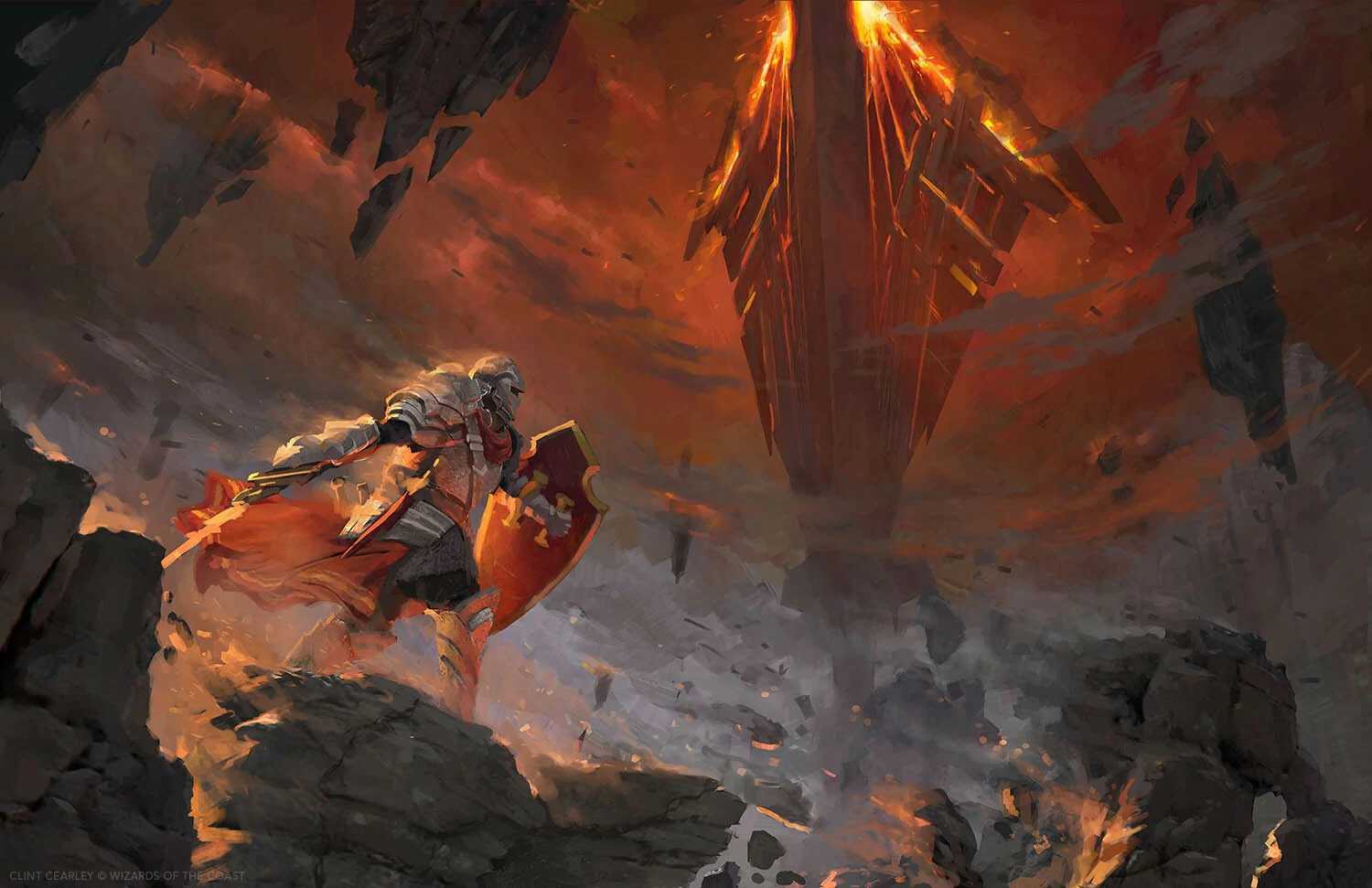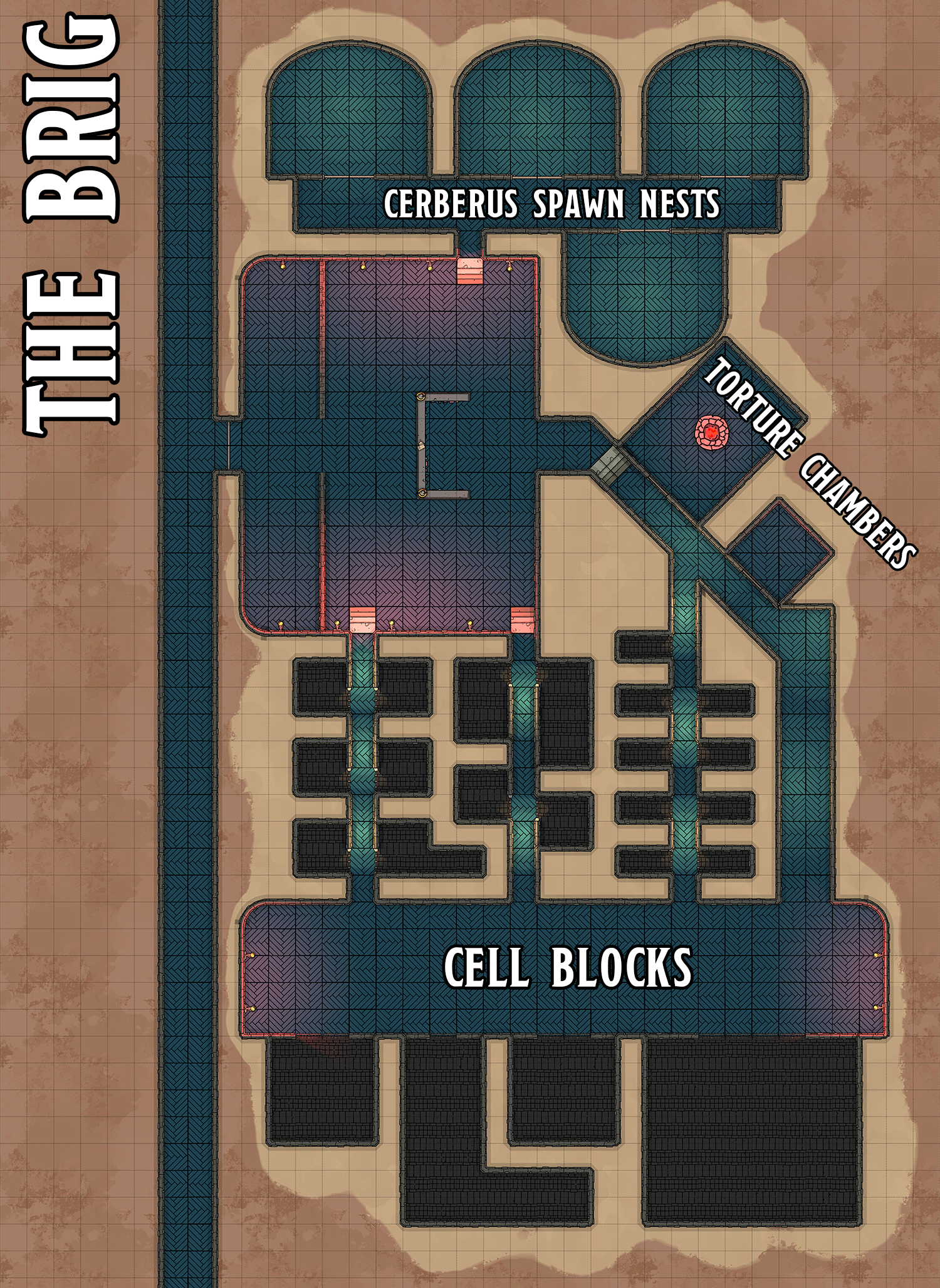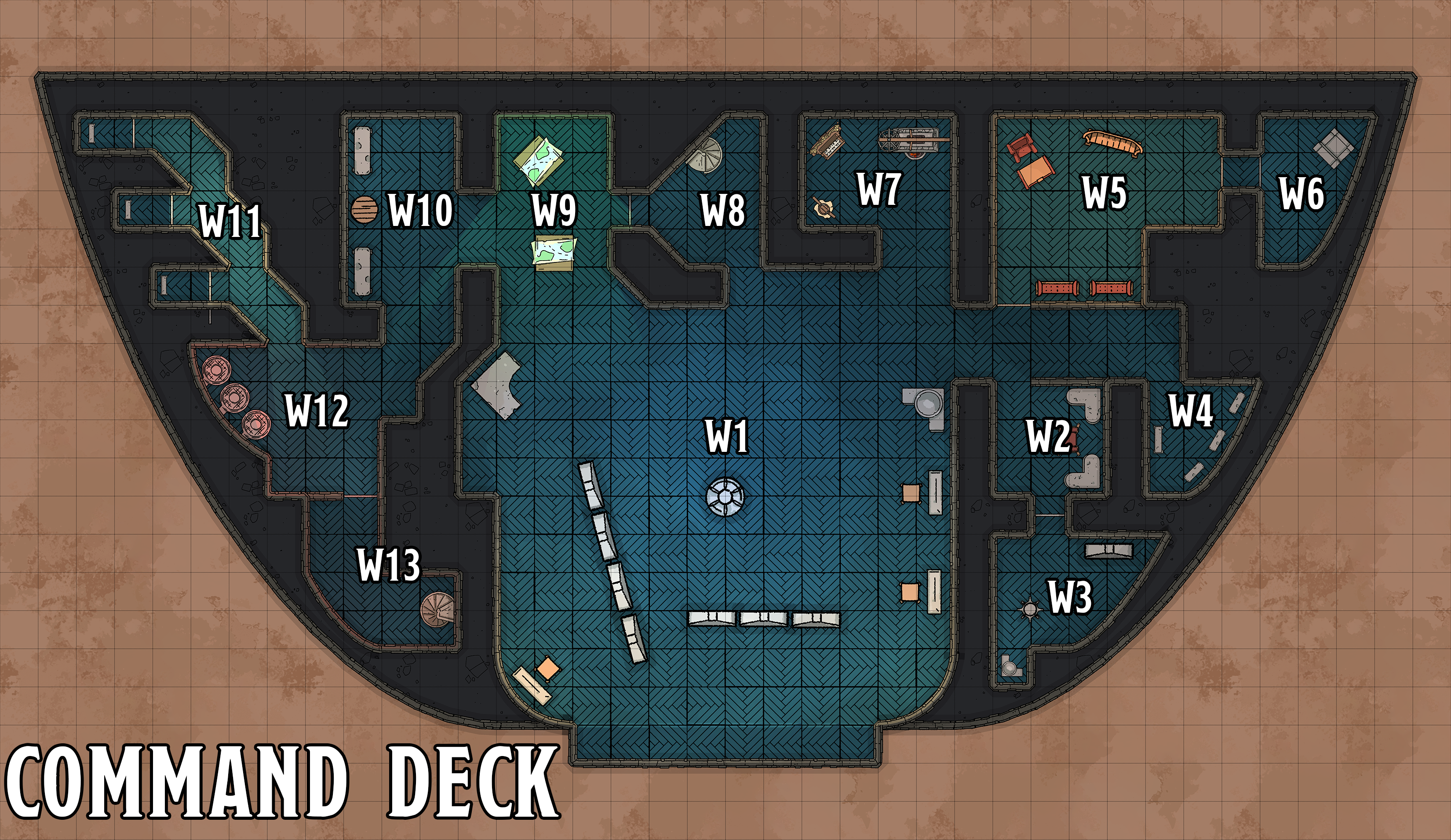ELTUREL’S RETURN
Into this turmoil, Elturel returns.
But, of course, this is not Elturel as it was. At best, its population has been decimated, its political leadership has been wiped out, and its military strength is depleted. So it’s not going to magically wave a wand and return everything to the status quo.
The effect it will have is going to depend a lot on what the balance of power is in the city upon its return, and that will probably have a lot to do with the choices the PCs have made and what they’ve managed to accomplish. Broadly speaking, though, it seems likely that the city will be:
- Controlled by Ravengard’s Peacekeepers.
- Controlled by High Rider Ikaia.
- Controlled by both of them, either in an agreed alliance or a de facto division (e.g., Ravengard is currently in control of the west half of the city and Ikaia is in control of the east).
- Controlled by the PCs.
The PCs, of course, will chart their own course. We’ll look at the other two in more detail below.
The other thing to consider are the lingering hostiles in the city. They might include:
- Ikaia and/or his sons and daughters, if they ended up on the losing end of the stick but weren’t completely wiped out.
- Demon raiders, who could have easily been carried to the Material Plane along with the rest of the city.
- Zarielite cultists, who will undoubtedly start trying to make alliances and seek aid from other Zarielites still active in the region.
- Hell Knights, some of whom could make a propaganda play of, “I was transformed by my travails in Hell, but I remain the most legitimate authority of Elturgard’s government and I hereby declare myself High Observer.”
Alternatively, don’t be afraid to declare any/all of these lingering problems completely solved by Elturel’s return: the demons and/or hell knights return to their respective planes, Ikaia and his offspring burn up in the sun or retreat back into the depths below the city, the cultists all go scurrying away to other cities in the region, etc. It’s okay to open up some space for the stuff in the next phase of the campaign, turning the focus away from the city and towards the whole region.
THE POLITICS OF IKAIA
If Ikaia has somehow managed to gain control of Elturel, he’ll likely recognize that his position is extremely tenuous and will seek to consolidate what he has rather than trying to reassert Elturel’s regional claims.
Given Ikaia’s history, his rhetorical and diplomatic sales pitch will probably be something along the lines of, “I was wrongfully deposed by someone who literally sold the entire city to Hell. All I seek is to return Elturel to its rightful place, with its rightful ruler.” (Some may recall that Elturel’s imperial ambitions were alive and well during Ikaia’s reign, but that’s water under the bridge, right?)
Ikaia’s realpolitik is likely to be hunkering down, repairing Elturel’s defenses as quickly as possible, and hoping to weather out the current chaos while still being in control of the city. His best bet will probably be to play Scornubel and Berdusk and Soubar off each other to make that happen, a strategy the Zarielite cabal will be perfectly happy with because it will allow the Elturian Wars to continue unabated.
Is Ikaia pure evil with a gilded smile, completely reformed and earnest, or somewhere in between? That’s up to you.
THE POLITICS OF RAVENGARD
Before we can look at Ravengard’s position in Elturgard, we first have to consider the politics in Baldur’s Gate. The circumstances during Act I of the campaign are detailed in Part 3:
- The position of Grand Duke is open.
- At least two of the four ducal seats are open, and probably a third after Duke Portyr’s assassination.
- The position of Marshal of the Flaming Fists is up for grabs.
In the time the PCs have been gone, it seems likely that at least some of this political turmoil will have resolved. And the most interesting thing that should be resolved is the selection of a new Grand Duke on the assumption that Ravengard is dead, because then when Ravengard comes back alive it instantly creates all kinds of juicy drama.
Who should be Grand Duke?
Well, the most effective answer is probably one of the Portyrs, because the PCs already have a relationship with them. If Duke Portyr survived, then I’d suggest that he becomes Grand Duke and arranges for Liara Portyr to become Marshal of the Flaming Fists, solidifying the family’s control of the city.
If Duke Portyr was assassinated, have Liara ascend to his position and claim the title of Grand Duke, as well. I’d recommend that she hasn’t been able to duplicate Ravengard’s trick of also becoming Marshal, but it’s possible she’s been able to keep the position open for the moment so that she can continue wielding significant influence on the Flaming Fists in the interim.
In either case, I’d leave at least one of the ducal seats still open, which will leave some hefty political stakes on the table to spur intrigue. (And maybe one of the PCs will end up in it.)
The point of all this is that Ravengard’s return is going to be contested. He will, of course, expect to resume his positions of Grand Duke and Marshal. But if one or both of those are no longer available, expect pushback from the new office holders.
How this plays out will depend on a lot of factors, not least the PCs. Some things to consider:
- A political compromise might be negotiated. (For example, Liara resigns as Marshal so Ravengard can resume that role, but she gets the open ducal seat, so there are now two Portyr dukes.)
- Or things might rapidly decay into blood in the streets, as the loyalties of the Flaming Fist (and the PCs?) split and Baldur’s Gate falls into civil war.
- What role does the large population of Elturian refugees play in these political maneuverings? How do the politicians vie for their loyalty? What do the Elturians want?
- Does the political system in Baldur’s Gate survive this chaos? Having three of the four ducal seats open simultaneously, for example, is unprecedented. Does someone seize that opportunity to consolidate power and become a tyrant? Alternatively, do the compromises resulting from Ravengard’s return result in a fifth ducal seat being created?
Meanwhile, if Ravengard has emerged from Hell as the top dog in Elturel, he’ll try to hold onto that dominion as well.
This might hinder him in the politics of Baldur’s Gate (“don’t be ridiculous; you can’t have the High Observer of Elturel serving as the Grand Duke of Baldur’s Gate”), but it could also give an immense power base of reputation and manpower to re-coalesce his power in Baldur’s Gate. (This can be literally in the form of soldiers, but also propaganda stuff like appealing to the Elturian refugees as the “savior of their city.”)
Whether Ravengard holds onto Baldur’s Gate or Elturel or both, he’s going to pursue imperial designs in the ruins of Elturgard. With the PCs’ help, he might even succeed. Outcomes might include:
- A new Chionthar Empire that brings peace and prosperity to the region.
- A strong alliance between Baldur’s Gate and Elturel, while the rest of Elturgard nevertheless fractures back into separate city-states.
- Ravengard fails utterly, succeeding only in deepening the animosity between Baldur’s Gate and Elturel.
However it plays out, Ravengard will almost certainly contribute to the ongoing chaos of the Elturian Wars.
WHITHER ZARIEL?
One thing we haven’t touched on yet is what happens with Zariel.
There are a couple obvious scenarios: If the PCs kill her (presumably with help), she’s dead. If they negotiated with her to break the pact (or found a different solution that left her alive and unredeemed), then she still rules in Hell.
Of course, the most likely outcome is probably that the PCs help to redeem Zariel.
Homework: Descent Into Avernus almost certainly results in the power structures of Avernus being disrupted just as much as those of Elturgard. If Zariel is no longer Archduchess, who rises to take her place? What effect does that have on the Blood War? And even if Zariel is still in charge, it’s likely that other major players have been significantly affected by whatever deal the PCs made.
If the PCs have made allies in Hell and put schemes into motion, it’s possible they’ll want to return and continue pursuing their goals (or just to check in with their friends). Consider having the upheaval of power in Hell echo the upheaval occurring in the remnants of Elturgard. On Earth as it is in Hell, so to speak.
With Zariel redeemed, she likely returns with the PCs and Elturel to the Material Plane. There are a few ways this can then play out.
First, you can bring her story to a close. Assuming the players have invested in her story, frame a final scene with her before she departs for Mount Celestia in a beam of holy light. It worked. The PCs have helped to restore something beautiful to the multiverse and saved the soul of an angel.
Alternatively, maybe Zariel chooses to stay involved in the region. For example, she might try to reach out to the Zarielite cultists and convince them to join her and walk the path of redemption. The result might be a Second Zarielite Crusade (hopefully with more reasonable goals and/or happier outcomes).
Or maybe Zariel, even redeemed as she is, remains grandiose and a little self-important. “Elturel is mine!” she says. “And I will make right what I have wronged!” She’s likely to be opposed by Ravengard or Ikaia or both. Will the PCs help her? Oppose her? Either way, she will make her presence felt during the Elturian Wars.
And one final question: Whatever happens with Zariel… does Lulu go with her?
Or does she choose to remain with her new friends?
Either way, there are likely to be tears.
THE END…
…HAS YET TO BE WRITTEN.
Addendum: Rumors of Elturel
Addendum: Corpsedamp Zombies
Addendum: A Textual History of Elturel
Addendum: Playing Gargauth
Addendum: Streetcrawling Tools
Addendum: Elturian Names
Addendum: Hellturel Map Patches
Addendum: Soul Coins
Addendum: A Textual History of Zariel
Addendum: Player Hexmaps
Addendum: Avernus Map Patch
Addendum: The Ranks of Hell
Addendum: The Grand 5E Devil Index
Addendum: DMs Guild Capsule Reviews
Addendum: DMs Guild Capsule Reviews II
Addendum: DMs Guild Capsule Reviews III
Addendum: DMs Guild Capsule Reviews IV
Addendum: DMs Guild Capsule Reviews – Rhodarin Avernus
Addendum: Capsule Reviews – Adventurers League

